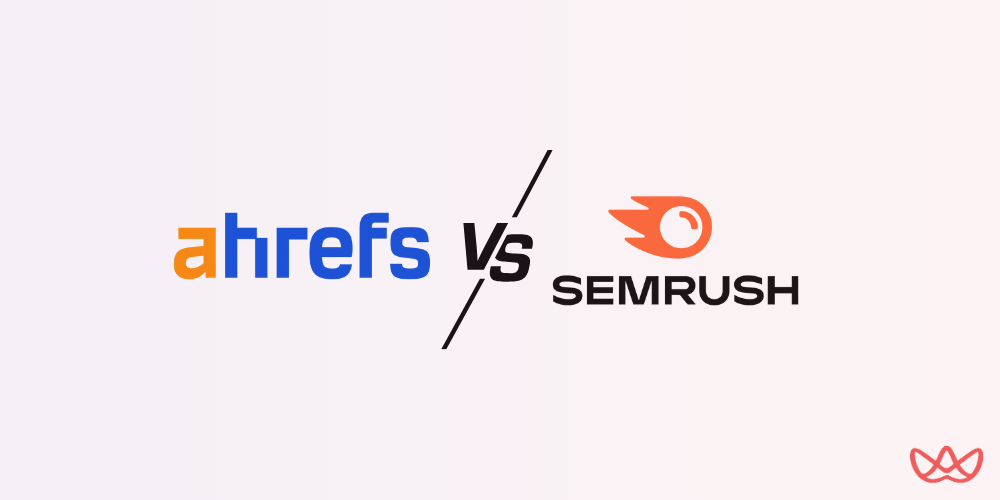Introduction to Webflow Development

Webflow has become a preferred platform for developers and designers due to its intuitive interface and powerful design features. Its user-friendly nature enables the creation of visually appealing websites without requiring extensive coding, making it accessible to both beginners and experts.
A well-rounded Webflow developer key skills summary includes proficiency in leveraging its design-development integration, which enhances efficiency and creativity. This streamlined approach has solidified Webflow’s reputation as a vital tool in modern web development.
What is Webflow?
Webflow is a versatile web design tool that enables users to create responsive websites visually. It integrates design, CMS, and hosting, allowing for seamless development. With its visual editor, designers gain precise control over every element, making it ideal for those seeking creative freedom without technical limitations.
What is Webflow Used For?
Webflow is ideal for a range of web projects, from landing pages to complex e-commerce sites. Its scalability suits both small businesses and large enterprises. With dynamic CMS capabilities, it’s perfect for content-heavy websites like blogs and portfolios. Additionally, Webflow’s advanced animation features enable interactive user experiences.
Why is Webflow Development So Popular?
Webflow’s rise in popularity stems from its ability to simplify web design through a visual development platform, making it accessible to both technical and non-technical users. A strong Webflow developer key skills summary includes adaptability and proficiency in leveraging the platform’s intuitive tools.
Additionally, Webflow’s supportive community, extensive learning resources, and continuous updates ensure developers stay ahead in the evolving web development landscape. Its flexibility and robust features make it a top choice for modern web design.
What Does a Webflow Developer Do?
A Webflow developer key skills summary highlights the balance between technical expertise and creativity needed to build and maintain functional, engaging websites. Webflow Developers play a vital role in transforming designs into interactive experiences while ensuring seamless usability. This section explores their core responsibilities and the differences between developers and designers within the Webflow ecosystem.
Key Responsibilities of a Webflow Developer
Webflow Developers are tasked with a variety of responsibilities that ensure the smooth operation and visual appeal of websites. Their primary duties include:
- Site Structuring: Organizing the layout and architecture of websites to ensure intuitive navigation and optimal user experience.
- CMS Management: Utilizing Webflow’s Content Management System (CMS) to create, manage, and update dynamic content efficiently.
- Custom Code Implementation: Incorporating HTML, CSS, and JavaScript to enhance website functionality beyond Webflow’s native capabilities.
- Responsive Design: Ensuring websites are mobile-friendly and adapt seamlessly to various screen sizes and devices.
- SEO Optimization: Applying best practices to improve website visibility and search engine rankings using Webflow’s built-in SEO tools.
These tasks require a deep understanding of both technical and design principles to create websites that are not only visually appealing but also highly functional and user-centric.
Webflow Developer vs. Webflow Designer: Key Differences
Webflow Designers and Webflow Developers play distinct yet complementary roles. Designers focus on aesthetics, crafting visually appealing layouts and ensuring brand consistency. They often use tools like Figma or Adobe XD before implementing designs in Webflow.
Developers handle the technical side, ensuring smooth functionality, coding, and performance optimization. While designers shape the look, developers bring it to life, making their collaboration essential for effective web projects.
Essential Skills for a Webflow Developer
A Webflow developer key skills summary encompasses a diverse range of competencies, from CMS management and coding to responsive design and SEO. Mastering these skills is essential for success in this role. This section explores key technical abilities and their real-world applications, offering insights through case studies and success stories to help both aspiring and experienced developers refine their expertise.
1. Webflow CMS and Site Structuring
Understanding Webflow’s Visual Development Platform
Webflow’s visual development platform is a powerful tool that allows developers to design, build, and launch responsive websites visually. This eliminates the need for complex coding, making it accessible yet powerful. Mastery of this platform is essential for structuring and managing Webflow sites efficiently.
Building and Managing CMS Collections
Effective CMS management is at the heart of Webflow development. Developers must be adept at building and managing CMS collections, which are vital for dynamic content. This skill enables the creation of flexible and scalable websites, tailored to meet diverse client needs.
2. HTML, CSS, and JavaScript Proficiency
Custom Code Implementation in Webflow
While Webflow offers a no-code solution, proficiency in HTML, CSS, and JavaScript is invaluable. Custom code implementation can enhance Webflow projects, allowing for unique functionalities and styles that go beyond the platform’s standard offerings.
Enhancing Webflow Projects with JavaScript
JavaScript can significantly enhance Webflow projects by adding interactivity and dynamic content. Developers skilled in JavaScript can create engaging user experiences that set their projects apart.
3. Responsive Web Design and UX/UI Principles
Creating Pixel-Perfect Designs in Webflow
Responsive design is a cornerstone of modern web development. Webflow developers must be capable of creating pixel-perfect designs that adapt seamlessly across devices. This requires a deep understanding of UX/UI principles to ensure intuitive and visually appealing interfaces.
Ensuring Mobile-First and Adaptive Layouts
With the increasing use of mobile devices, ensuring mobile-first and adaptive layouts is imperative. Webflow developers must prioritize mobile responsiveness to deliver optimal user experiences on all devices.
4. SEO Optimization for Webflow Websites
Best Practices for Webflow SEO
SEO optimization is crucial for the visibility and success of any website. Webflow developers must be well-versed in SEO best practices, including keyword research, meta tags, and content optimization, to enhance site rankings.
Using Webflow’s Built-in SEO Tools
Webflow offers built-in SEO tools that streamline the optimization process. Developers should leverage these tools to ensure their websites are search-engine friendly and easily discoverable by potential users.
5. Webflow Integrations and Automation
Connecting Webflow with Third-Party Tools (Zapier, Make, etc.)
Integrating Webflow with third-party tools like Zapier and Make can automate workflows and enhance functionality. This skill is essential for creating seamless user experiences and improving site efficiency.
Implementing Webflow API for Advanced Functionality
The Webflow API opens up possibilities for advanced functionality and customization. Developers must be proficient in using the API to extend the capabilities of their Webflow projects, offering tailored solutions to clients.
6. Performance Optimization and Site Speed
Image Optimization and Lazy Loading
Site speed is a critical factor in user experience and SEO. Webflow developers must optimize images and implement lazy loading to ensure fast-loading websites, reducing bounce rates and improving user satisfaction.
Minimizing Code Bloat and Redundant Styles
Minimizing code bloat and redundant styles is essential for maintaining efficient and fast websites. Developers should regularly audit their projects to ensure clean and optimized code.
7. E-commerce and Webflow Development
Building Custom Webflow E-commerce Stores
Webflow’s e-commerce capabilities allow developers to build custom online stores. This requires an understanding of product management, inventory, and customer experience to create successful e-commerce solutions.
Managing Checkout and Payment Integrations
Managing checkout and payment integrations is crucial for e-commerce success. Webflow developers must ensure secure and seamless transactions to enhance customer trust and satisfaction.
Career Growth and Opportunities for Webflow Developers

The demand for Webflow developers’ key skills summary continues to grow as businesses prioritize their online presence. With the ability to build visually engaging and functional websites without extensive coding, Webflow developers are highly sought after. This section explores career growth, job market trends, salary expectations, and future opportunities, highlighting why this role is increasingly valuable in the evolving digital landscape.
Are Webflow Developers in Demand?
The Webflow developer key skills summary highlights the growing demand for professionals in this field as businesses embrace digital-first strategies. Startups and marketing agencies increasingly seek Webflow developers for rapid prototyping and efficient website deployment. With industry reports showing steady growth in demand, mastering Webflow can open doors to exciting career opportunities.
Webflow Developer Salary and Market Trends
Webflow Developer salaries vary based on experience, location, and project complexity. In the U.S., earnings typically range from $60,000 to over $100,000 annually. With increasing demand, salaries are rising as companies compete for skilled professionals, making it a lucrative career path.
The Future of Webflow Development
The future of Webflow Development is bright, driven by continuous innovation and emerging technologies. Developers must stay updated on new features to remain competitive. AI and machine learning integrations will enhance workflows, offering more personalized web solutions. Staying ahead of trends ensures long-term career growth.
How to Become a Webflow Developer
Starting a career as a Webflow Developer offers exciting opportunities in web design and development, especially with the rise of no-code platforms. The Webflow developer key skills summary emphasizes the importance of mastering platform-specific skills, earning certifications, and building a strong portfolio. Whether freelancing or joining an agency, focusing on training and hands-on experience will help establish a successful career in this field.
Webflow Certifications and Training
Boosting your Webflow expertise and overall web development skills can be achieved through strategic certifications and continuous learning. To demonstrate proficiency, consider:
- Webflow Certifications:
- Utilizing Webflow University courses tailored to various skill levels.
- Focusing on essential topics like Webflow CMS, responsive design, and e-commerce functionalities.
- Complementary Skill Development:
- Exploring platforms like Coursera, Udemy, and LinkedIn Learning.
- Delving into web design principles, HTML, CSS, and JavaScript.
- Regularly updating your knowledge to stay current with industry trends and best practices.
Building a Strong Webflow Portfolio
To effectively showcase your Webflow skills and attract clients or employers, a strong portfolio is essential. Here’s a breakdown of key components:
- Project Variety:
- Showcase a range of projects demonstrating your Webflow design and development abilities.
- Emphasize your grasp of responsive design, user experience (UX), and SEO optimization.
- Case Studies:
- Include detailed case studies outlining your design process.
- Document challenges encountered and the solutions you implemented.
- Highlight your problem-solving skills and provide insight into your workflow.
- Portfolio Refinement:
- Solicit feedback from peers or mentors to improve your projects.
- Ensure your work aligns with industry standards.
Freelancing vs. Working for an Agency
The choice between freelancing and agency work in Webflow development hinges on individual priorities. Here’s a comparison:
- Freelancing:
- Offers flexibility in schedule and project selection.
- Allows for setting personal rates.
- Requires strong self-discipline and client management skills.
- Agency Work:
- Provides a structured environment with team collaboration.
- Offers opportunities for learning from experienced professionals.
- Includes agency-managed client acquisition and project management.
Regardless of the chosen path, success in Webflow development relies on:
- Considering long-term career objectives and work style preferences.
- Committing to continuous learning and adaptation.
FAQs About Webflow Development
What Does a Webflow Developer Do?
A Webflow developer is responsible for building and maintaining websites using the Webflow platform. They leverage Webflow’s visual development tools to create responsive and visually appealing sites without the need for extensive coding. However, they often incorporate custom code to enhance functionality. Key tasks include designing layouts, structuring CMS collections, and optimizing websites for performance and SEO.
What Is the Brief Description of Webflow?
Webflow is a powerful web design tool that allows users to design, build, and launch responsive websites visually. It combines the ease of a drag-and-drop interface with the flexibility of custom code, making it a popular choice for designers and developers alike. Webflow also offers hosting services, making it a comprehensive solution for web development.
What Is the Difference Between a Webflow Designer and a Webflow Developer?
While both roles work with the Webflow platform, a Webflow designer primarily focuses on the visual aspects of a website, such as layout, color schemes, and typography. They ensure the site is aesthetically pleasing and aligns with brand guidelines. On the other hand, a Webflow developer not only handles the design but also delves into the technical aspects, such as custom coding, CMS setup, and performance optimization. The developer ensures the site is functional, efficient, and scalable.
Are Webflow Developers in Demand?
Yes, Webflow developers are increasingly in demand as more businesses recognize the platform’s potential for creating dynamic and responsive websites. The demand is particularly high among startups and marketing agencies looking for cost-effective yet powerful web solutions. As Webflow continues to evolve and expand its capabilities, the need for skilled developers is expected to grow.
What Skills Do You Need to Be a Webflow Developer?
To thrive as a Webflow Developer, mastering Webflow’s tools, coding languages, responsive design, SEO, and problem-solving is essential. These skills ensure high-quality, functional, and optimized websites that stand out in a competitive digital space.








